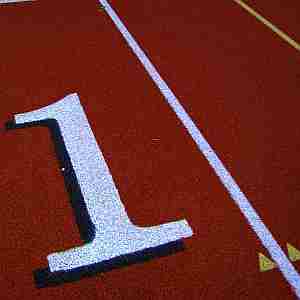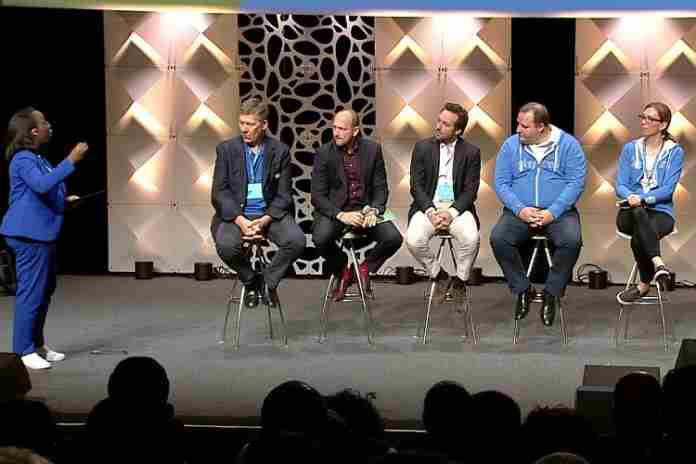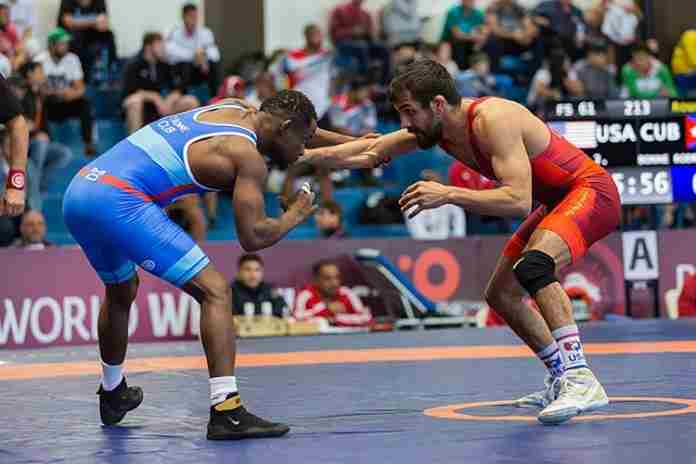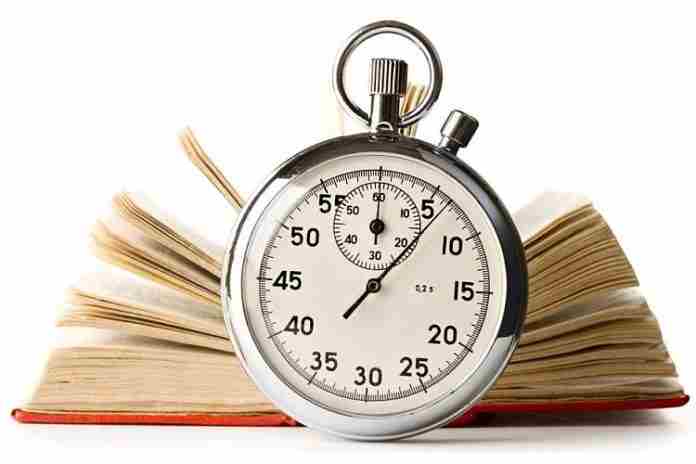 The World Anti-Doping Agency (WADA) and others in the anti-doping movement have been rather upbeat in recent months about the progress against doping worldwide.
The World Anti-Doping Agency (WADA) and others in the anti-doping movement have been rather upbeat in recent months about the progress against doping worldwide.
But once you ask some questions, you find out that there is a long way to go. Asked what could be achieved if WADA had more money, Frederic Donze, its Chief Operating Officer stated:
“What I can tell you is, for the work that is being conducted – I can speak on behalf of WADA, but probably for the other organizations – for the work that is being conducted, in terms of resources, we are still very stretched and I think there would be potential for the fight against doping with more money.”
This came at the International Olympic Committee’s International Athletes Forum, which provided a fascinating look at how the Olympic Movement wants to be seen by what it maintains is its principal audience: athletes.
An energetic two-hour session on anti-doping took place on 13 April, at the SwissTech Convention Center in Lausanne (SUI). The panel was an all-star aggregation of major players in the anti-doping movement, including Donze (CAN); Beckie Scott (CAN), an Olympic gold medalist in cross-country skiing and Chair of WADA’s Athletes Committee; Ben Cohen (SUI), Director General of the International Testing Agency; Brent Nowicki (USA), head of Anti-Doping Chamber of the Court of Arbitration for Sport, and Dr. Richard Budgett (GBR), the IOC’s Medical Director.
To the credit of the IOC and the participants, this wasn’t so much a show as an explanation of what has been done and what can be done in the future. The outlook is hopeful, but hardly certain.
Further to the question of what could be done with more funding, Donze added:
“That [added] money could probably be used, in priority, I would say, for operational areas. I was speaking of intelligence and investigations. We have created a new department from scratch, but we have eight people in this department. Eight is OK. We have a number of analysts, of investigators, but when you look at what’s happening in the world at this moment, the number of findings that have resulted from collaboration with law enforcement and anti-doping authorities, there is certainly a potential there to do much more.
“Look at education. Education is always promoted as one of the solutions for anti-doping. Is a lot being done in terms of education? Certainly, more could be done. So, I think, if you ask me what we would do with more money, certainly there are priorities I see that would be more important than the one you mentioned, looking really at the effectiveness of the fight against doping.”
The spontaneity of the session sparked some interesting answers to hard questions.
There was an amazing exchange near the end of the session, with Russia’s two-time Olympic pole vault champ Yelena Isinbayeva – who resigned as chair of the Russian Anti-Doping Agency in 2017 under pressure, after criticizing the International Assn. of Athletics Federations (IAAF) for suspending Russia in 2015 – asking the panel to be more “creative” so that doping cheats would be caught right away and not in re-testing up to 10 years after the fact.
Donze kept a straight face and noted, “That’s a very fair point and we would love to, in an ideal world, find the magic tools to catch all cheaters immediately. Point very well taken.
“This being said, just a few elements that I can respond on. The first one is that, obviously, we want to look forward, but the whole re-analysis and the whole past, we have to deal with it as well. That’s important and the IOC has shown very clearly with their re-analysis program that such a significant number of cheats have been caught. I think that from my perspective, it’s very important to have that deterrent effect for those who cheat and think that they will go through the network and suddenly through the net and suddenly they find out it’s not the case.”
So where is the anti-doping movement today?
The Russian question was dealt with straightaway; no one had to wait for it. Donze was clear that, “this has been a long process, but this is a process which we believe has paid off. We now have in Russia an anti-doping agency which is, in our view, probably one of the top in the world. And we continue to work very closely with them to be sure they have the independence, the rigor and the professionalism that is needed to give confidence to the rest of the world.”
And Donze wanted to be clear that there have been benefits to the Russian inquiry:
“There have been a number of elements which have been speeded up by the Russian saga. I can give you just two examples. The first one is the whole area of compliance of anti-doping organizations with the World Anti-Doping Code. As a result, in part, of the Russian saga, WADA has developed, with the help of the whole anti-doping community, an International Standard for Code Compliance by Signatories, which holds those that conduct anti-doping on the field – International Federations, National Anti-Doping Organizations and so on – to standards that we believe are standards that are higher than they used to be, in terms of the quality of the work.
“And then the whole aspect of intelligence and investigations has been strengthened. Certainly, you have seen over the past few years, an evolution of anti-doping where traditionally anti-doping was about education, testing, sanctions. And more and more, we see additional elements being added to the anti-doping area. And the whole area of intelligence and investigations has taken quite an importance in the past few years. WADA itself has created an Intelligence and Investigations department which is composed now of eight persons. We have seen in the anti-doping community, in National Anti-Doping Organizations, in International Federations, the creation and development of intelligence and investigations units – we can certainly talk about these more – but certainly, these have been two of the areas that have been strengthened as a result of what happened.”
One of the themes that was repeatedly stressed was that doping is being handled, more and more, by completely independent agencies, instead of the IOC or the International Federations themselves. Not only WADA, but the International Testing Agency and a separate, dedicated division of the Court of Arbitration for Sport, to handle appeals.
But who is getting tested how often? One pointed question asked about having more athletes in WADA’s Anti-Doping Administration and Management System (ADAMS). Even if they are not tested, the idea was that being subject to the system might be a deterrent in itself. Donze noted that “In the anti-doping community, we are also hearing opposite observations, where actually athletes who are being asked to provide whereabouts, and are never testing, complain it’s actually a burden for them to provide [location] whereabouts, but they would like to be tested more often, so I think it’s always a balance to find. …
“Hopefully, in the very near future, only participants that have been tested will be able to participate in the Games. What I mean by that is not in terms of eligibility, because there is a hope out there that participants in the Games will have been tested already.”
This opened the door to a discussion about how few athletes are actually tested compared to those who are entered in the Olympic Games or Paralympic Games. One questioner called the low percentage “scary,” but Budgett wanted to emphasize that there is change afoot:
“I think what you are speaking to is exactly what the Pre-Games Testing Task Force is all about, and it will be run by Ben and his team. They’ve got someone who really is into numbers and will analyze all this so that we can really see where the holes are, where the testing isn’t what we want.
“And we’re not yet at the stage where we say everybody must have had a test before they go to the Olympic Games, but that has to be the aspiration. And not just a test, but be part of an intelligent testing program, so that the whole point of the pre-Games testing task force is to be a partnership of the National Anti-Doping Organizations, the International Federations, with the ITA coordinating, with the support of WADA and the IOC – everybody working together – to find out and measure exactly who’s being tested, depending on how elite they are, how much chance they have to medal, how much chance they’ve got of being selected, so that we can use the catalyst of the Olympic Games to make that testing just as good as it possibly can be.”
There was a lot more to this session, but it gave a much clearer picture of where the anti-doping movement is today. Probably pretty good in scrutinizing those who win medals, or are favored to. Not very good at weeding out “Olympians” who compete in the Games, but are not among those at the very top of the results sheet. But those folks get national funding support too, in many cases, and if they are dopers, stand in the place of clean athletes who don’t get the chance.
There is reason for optimism, but the question of money is right on target. The anti-doping movement needs to be flexible and creative, but not stretched. Now, who will help?
Rich Perelman
Editor




























